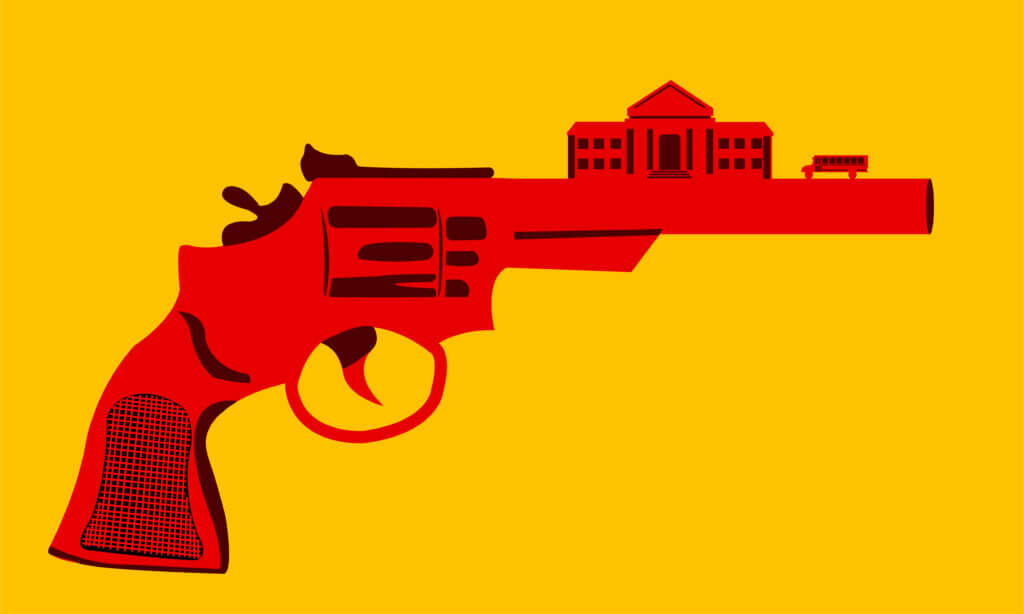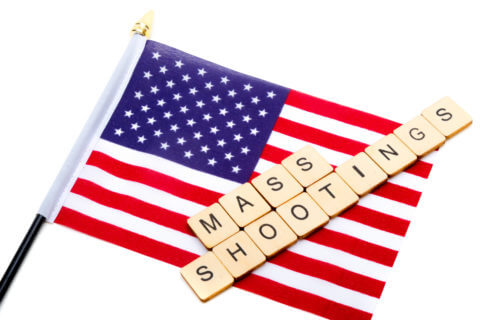HERNDON, Va. — The constant risk of unprovoked gun violence has become an ugly fact of life in America. Hundreds of shootings have already been recorded in the United States this year, and the tally continues to rise on a near-daily basis. On the surface, these tragedies seem to occur randomly, but noteworthy new research out of Iowa has calculated the probability of a mass shooting in every state and in public places like shopping malls and schools.
Scientists at Iowa State University say the new method they’ve put together for quantifying the risk of a mass shooting in specific places may one day help security officials make informed decisions when it comes to planning for emergency events.
To conduct this study, Iowa State associate professor Cameron MacKenzie and his doctoral student, Xue Lei, applied a number of statistical methods and computer simulations to a database of mass shootings from 1966 to 2020 — originally put together by The Violence Project. For reference, The Violence Project technically defines a “mass shooting” as any incident in which four or more victims are killed by a firearm in a public place. The U.S. has experienced at least one mass shooting every year since 1966.
After generating a probability distribution of annual mass shootings in the United States, the study authors used two distinct models to simulate the annual number of mass shootings in each U.S. state. Those findings then helped to calculate the expected number of mass shootings, as well as the chances of at least one mass shooting occurring in each state over the course of one year.

The Violence Project also includes the percentage of mass shootings across different types of locations. The research team used that data specifically to calculate the odds of a mass shooting in nine different types of public locations (a restaurant, school, workplace, house of worship, etc.) in two states (California and Iowa). Importantly, mass shooting odds were also estimated for the two largest high schools in both of those states.
This approach led to the following findings:
- The states with the greatest risk of a mass shooting are also the most populous: California, Texas, Florida, New York, and Pennsylvania. Together, those states account for close to 50 percent of all mass shootings.
- Some states, like Iowa and Delaware, have never experienced a mass shooting.
- The annual risk of a mass shooting at the largest California high school is roughly 10 times greater than the risk at the largest high school in Iowa.
- The amount of mass shootings in the U.S. has increased by approximately one shooting every 10 years since the 1970s.
Definition of a ‘mass shooting’ still isn’t universal
Interestingly, Prof. MacKenzie notes that the chances of a mass shooting at a specific location depend heavily on one’s exact definition of the term. For example, unlike The Violence Project, The Gun Violence Archive defines a mass shooting as four or more individuals shot, injured, or killed in any location, not just a public location. Consequently, The Gun Violence Archive has collected copious data on shootings in both public and private locations as well as targeted shootings (gang shootings, etc).
When researchers opted to apply data provided by The Gun Violence Archive to their models, the predicted number of annual mass shootings came out to be nearly 100 times more than a forecast based on The Violence Project’s data. More specifically, the models predicted 639 mass shootings in 2022, along with 95 percent odds that the U.S. would record somewhere between 567 and 722 mass shootings that same year.
Prof. MacKenzie stresses that “most media appear to use this broader definition of mass shootings.” So, he urges journalists to explain how they define mass shootings when reporting on statistical data.
Regarding mass school shootings, study authors say that when it comes down to the numbers, the average U.S. student runs a very, very low risk of experiencing such an event.
“Our results show that it is very, very unlikely that a specific student will attend a K-12 school and experience a mass shooting. But to parents of a child at a school that has experienced a mass shooting, explaining that the school was extremely unlucky provides no comfort,” Prof. MacKenzie explains in a media release. “We should not live in fear that our children will experience such a horrific event. Mass shootings are very low probability but very high consequence events.”
The study is published in the journal Risk Analysis.
You might also be interested in:
- Over half of Chicago residents witness gun violence before turning 40
- Majority of Californians have been affected by an ‘experience of violence’
- No coincidence: Gun control brought end to mass shootings in Australia, study finds


I hope, but doubt, data on which antidepressant each shooter was taking or withdrawing from at the time of the shooting. (Data on many of those can be found here: SSRIstories.net) And the student assistant in this study should be made aware of this critical information: that safety studies on the Asian population, along with most other ethnic groups, other than caucasians, was never conducted with these drugs which list both homicidal & suicidal ideation as side effects.